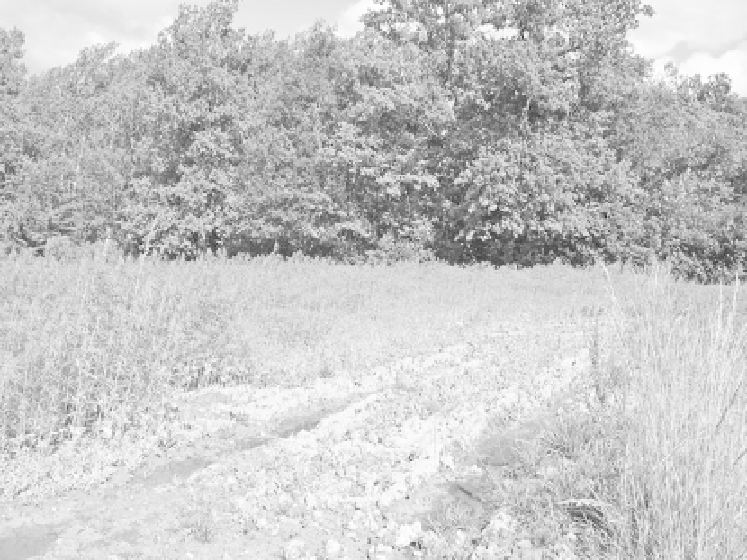Agriculture Reference
In-Depth Information
Fig. 6.1.
Hemp does not appreciate wet soils.
Excellent results are observed in South
Africa and Australia, where the climate is
much hotter and closer to the equator, provid-
ing the crop is sown 3-4 weeks before the
summer solstice, thereby ensuring that flower-
ing goes well.
interrupt flowering and consequently will
advance the harvesting dates for the hemp
seed.
FERTILIZER APPLICATION
.
The figures provided
below summarize the results of the experi-
ments conducted by different organizations
between 1977 and 2004: the FDGEDA Aube,
APVA Haute Marne, SCPA, Chambre
d'Agriculture de l'Eure and INRA (life cycle
analysis, 2005).
For 1 t of DM, the vegetation process
mobilizes:
18-24 kg of nitrogen
WATER REQUIREMENTS
.
During the course of
its vegetative cycle, 1 kg of dry matter (DM)
mobilizes between 300 and 500 l of water;
this corresponds to a pluviometry of 30-50
mm/t DM produced. The evaluation of the
water reserves in the ground at the start of
the vegetative cycle allows the pluviometry
required during the course of vegetation to
be evaluated. While this may be somewhat
subjective, the efficacy of the pluviometry
needs to be taken into account, for rain that
intervenes after a period of drought will have
a significant positive effect and will make up
for any delays due to the water deficit. A water
deficit that lasts right through until the end
of the growth period will penalize hurd pro-
duction heavily, although it will not affect the
potential hemp hurd yield. In the same way,
hydric stress at the time of flowering can
•
•
5-10 kg of P
2
O
5
20-40 kg of K
•
2
O
30-40 kg of CaO
•
•
8-10 kg of MgO
Less fertilizer is lost than the plant uses to
grow, especially as the leaves and roots remain
behind in the field. The expenditure for 1 t of
DM produced corresponds to:
9-12 kg of nitrogen
•
•
6-8 kg of P
2
O
5
12-19 kg of K
•
2
O

